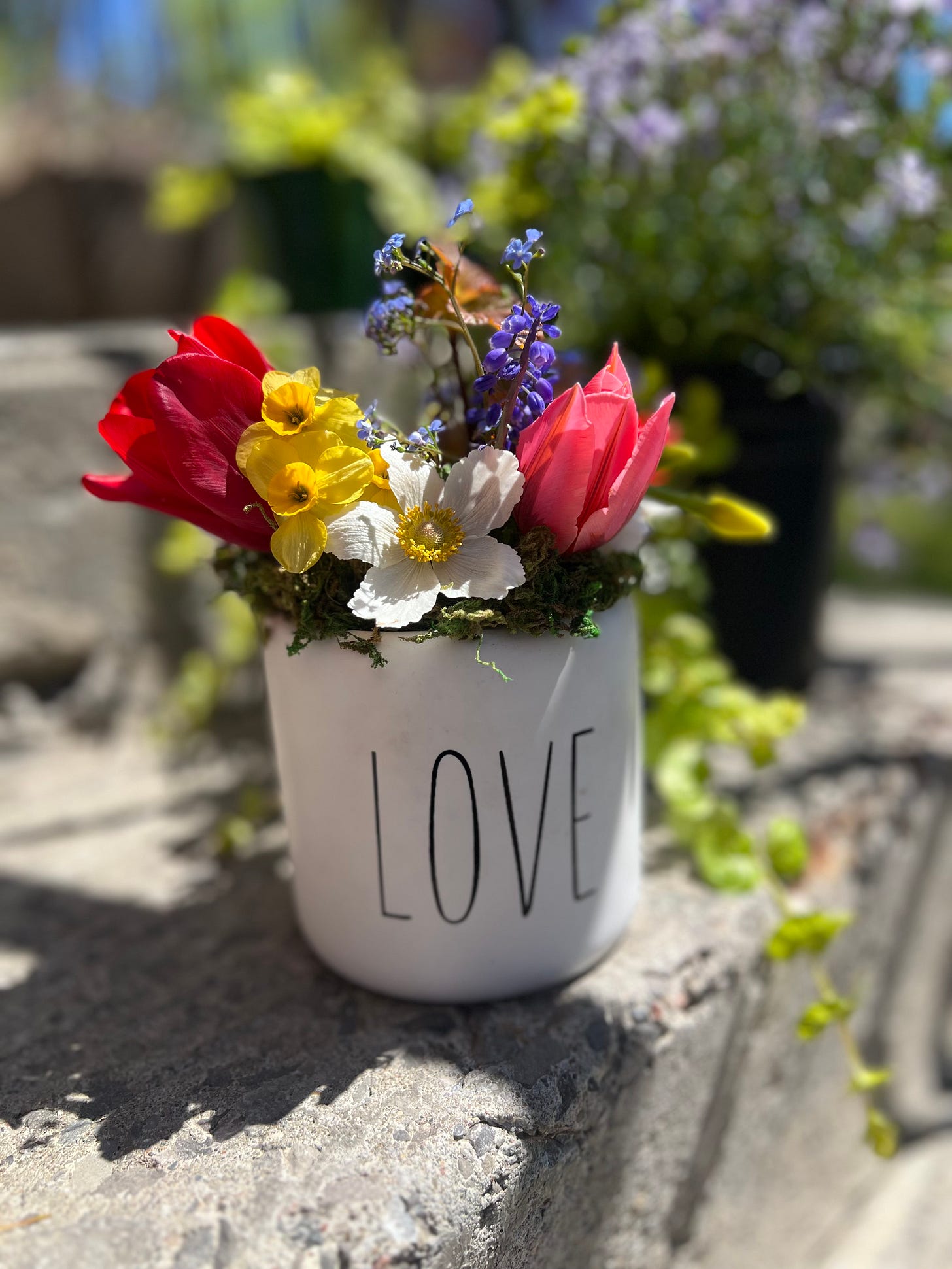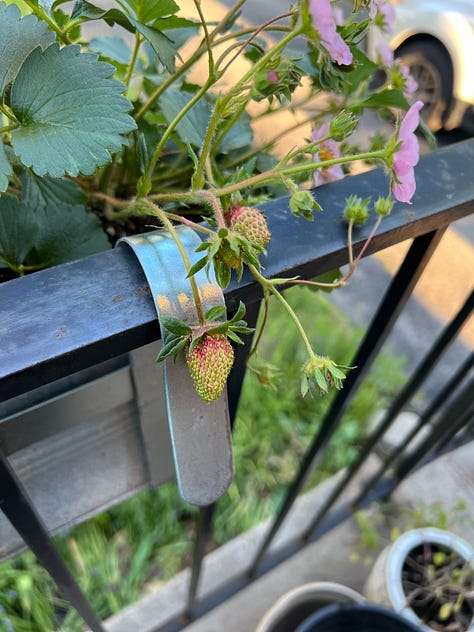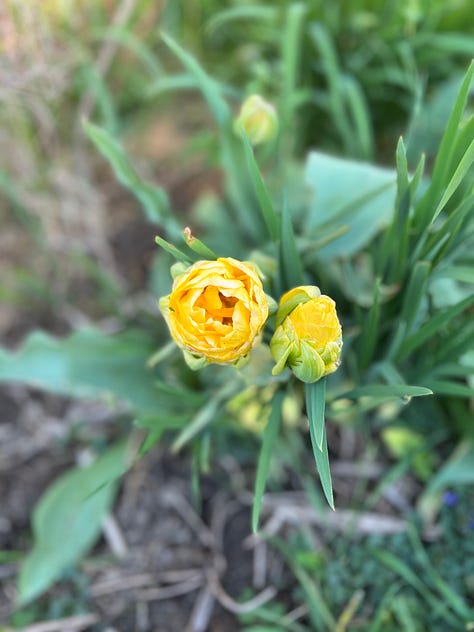
My garden is a place of renewal, but it feels overwhelming getting her in order each spring. The enormity of battling the weeds that take hold so quickly, laying claim to my vegetable and flower beds. They want to choke out my perennials, too polite to fight back.
Of course, many of these ‘weeds’ are sold at garden centres as ground cover - catnip, dead nettle, et al. I’m nervous I’ll accidentally tear out something I’ve painstakingly cultivated.
Inevitably, I do rip out wrong plants. Gripping their pricey, limp bodies in my gloved fist — it’s the brutality of being a self-taught gardener. I learn through trial and error, success and failure. It’s too often ‘thrive-or-die’ in my yard, as I’m also not a consistently attentive gardener.
Optimism flows in my oasis of green, even as a few experiments fade under my care. Bursts of colour and texture exhilarate me.
If I were a visual artist, I would paint in broad, bold strokes of colour. I’d leave pointillism and hyperrealism to those more skilled and patient. Drawn to a variety of shapes, textures and colours, ‘perfect’ isn’t important. I actually feel uncomfortable in meticulously trimmed and unnaturally controlled environments; I appreciate randomness in gardens. I love those that unfold symphonically throughout the season.
Surveying my neighbourhood, to observe ‘what the neighbours grow’, I find some of the ‘same old, same old’ greenery quite tiresome. An overgrown yard can be less dull than a perfectly manicured, dreary landscape.
I’m peevish about impatients planted in tidy rows. Endless euonymus is synonymous with ‘uninspired’. Repetitive clumps of burning bushes should most certainly be set alight. I mourn dead cedars sentinelled along driveways, expected to live where there is no love nor water.
Gardens that invite pollinators, forgo the perfect lawn of our forebears, and provide cover for the tiny beings with which we share this world lift my spirits. I’m increasingly aware of the habitats and inhabitants around me. I try to provide native species on which tiny fellow beings may forage. This means gradually divesting my garden of some of the showier foreign varieties and allowing dandelions to remain in certain areas (like I have a choice!). One of my roses didn’t seem to make it through the harsh winter, so it’s time to consider a native species once the roots die back.
A robin friend welcomes my morning routine of puttering in the garden. He takes full advantage of my efforts, rooting out the chunky worms in my wake. He plops down very close — less than a foot sometimes — fearless as I chat about the garden with him. Wary rabbits keep their distance, hiding amongst the low foliage and weeds. They know all the escape routes under the fence or among the shrubs if I wander too near; often startling me as they dash for safety.
It’s time to begin splitting and rearranging plants to give them more room to grow, or to where they will thrive.
Let’s see what comes. It’s part of the joy.








Love this, Linda. You describe how I have often felt as my gardening learning curve has been slow. Nature's feedback is not fast! I am thrilled when I can recognize and name a plant (my latest: lamb's ear) and know which green things are weeds (though I am currently stumped by a few new items showing up in my garden). I am starting to realize how I can turn my gaze to the successes I've had rather than focusing on what I still have to learn.
beautiful flowers....beautiful writing about your garden and your gardening.....